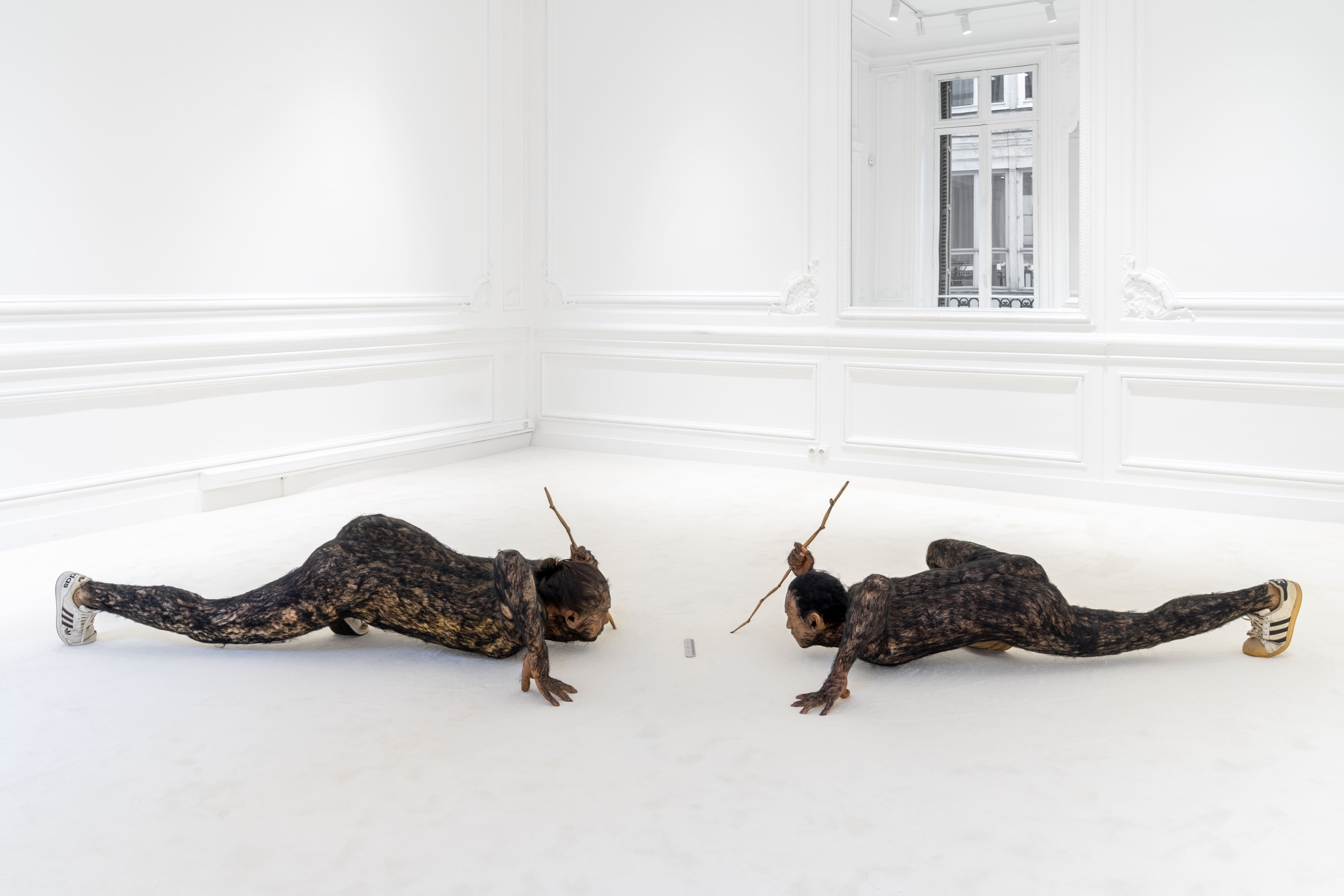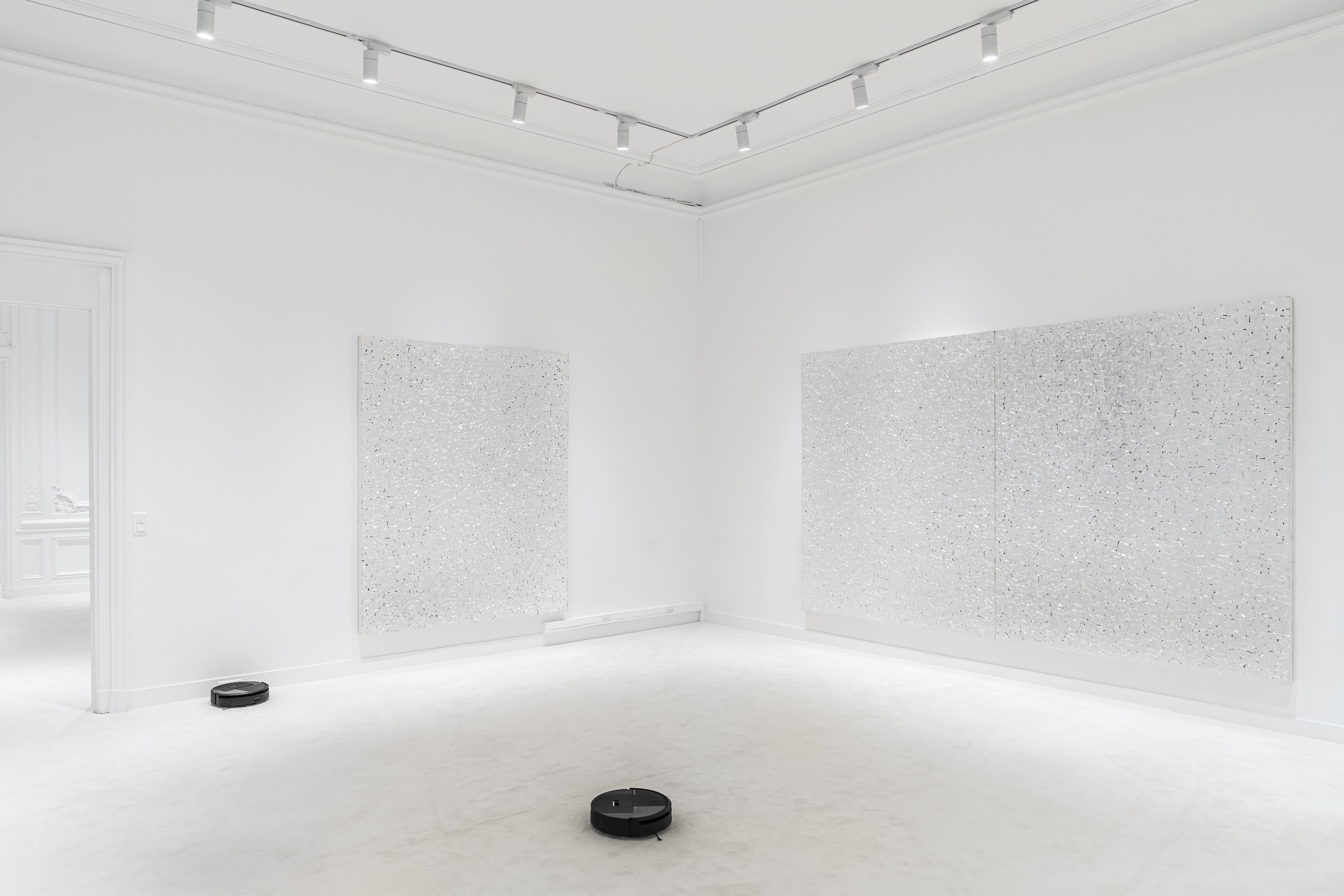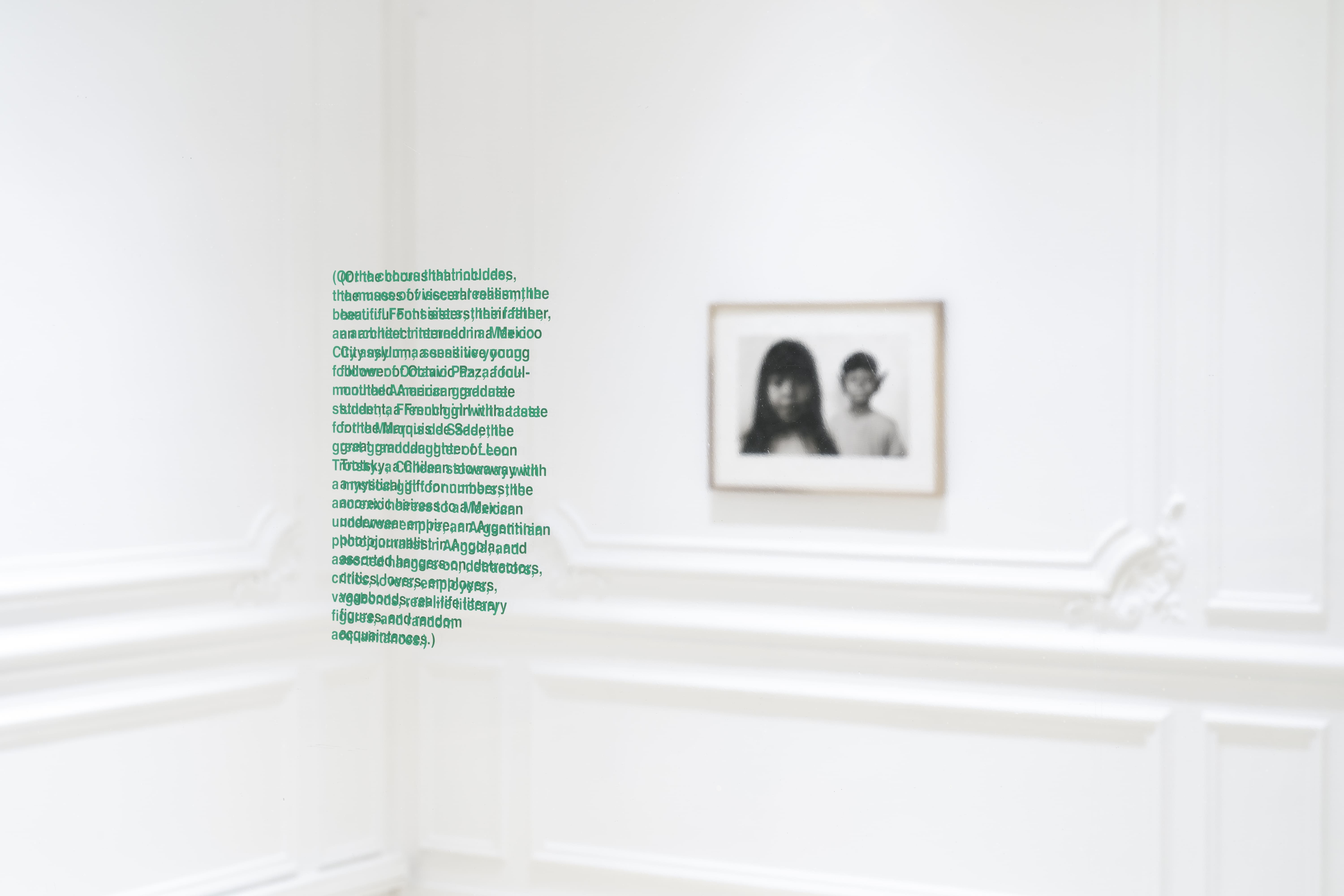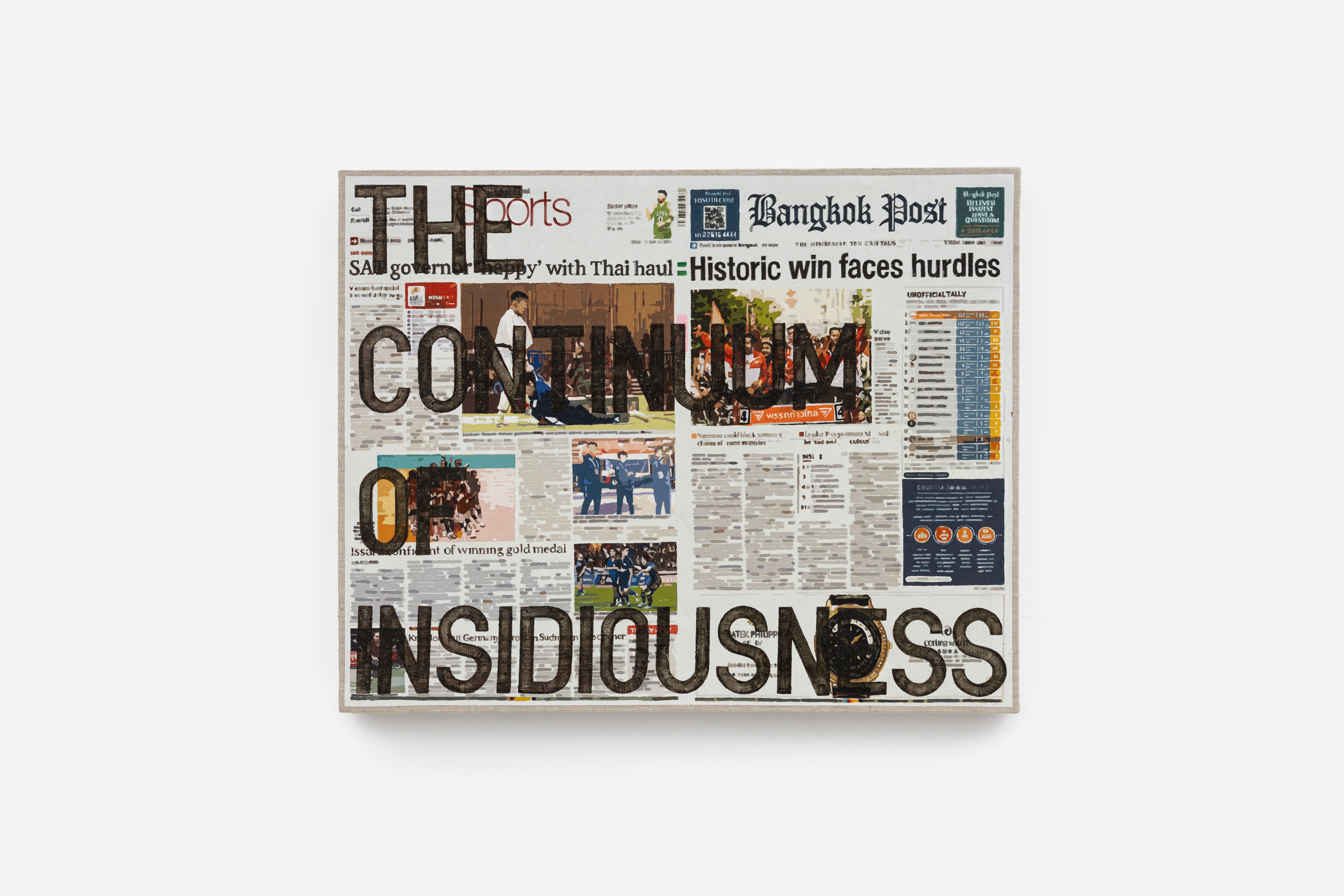
In 1968, the year of Marcel Duchamp’s death, Rirkrit Tiravanija’s father took a photograph of his two children in Addis Ababa, Ethiopia, where they resided at the time. Initially exhibited in 1993 as self-portrait and eventually under the title untitled 1968 (mr. spock), the black-and-white picture shows young Rirkrit, next to his blurry sister, wearing tinkered prosthetics on his ears, mimicking those of Spock, the iconic character of the US-American television series Star Trek. On the original show that first aired in 1966, Spock was the only extraterrestrial crew member aboard the Starship USS Enterprise—he is described as half-human, half-Vulcan—and it’s precisely his pointy ears that signify his otherness. The artist would later cheekily refer to those pieces he made from modelling clay at age six or seven, as his first sculpture.
Rirkrit Tiravanija’s works have always defied notions of singular authorship, not only when they are shaped by the gathering of people, their agency and interactions. In his highly citational practice, art history is understood as something generative: by way of reenacting, making use of and copying existing artworks, both his own and by other artists, Tiravanija continues to destabilize the status of the discrete object and expand the capacities of the readymade (the readymade not merely as a physical object, but also as a formation of preconceived ideas and sets of practices that are readily available in society). Some of Tiravanija’s earliest works, as well as most recent ones, can be read as counter-motions to the commodification of life, critiquing the dichotomies that Western taxonomic knowledge systems have constructed: Nature/Culture, Human/non-human, Artwork/Artifact, Civilized/Savage.
Staring at a metal object on the gallery’s floor are two hairy figures, face to face, who seem to have escaped an ethnological diorama. Mimicking the Spider-Man posture of professional golfer Camilo Villegas, the life-sized sculpture portrays Rirkrit Tiravanija and artist friend Udomsak Krisanamis rendered as prehistoric creatures—almost human. Effigies have appeared in Tiravanija’s work before (infamously, he has even employed a doppelganger), while others of his self-portraits incorporate artifacts as proxies for the artist’s body, negotiating the meaning of its absence or presence. Lying between the two figures is a steel comb, an almost exact replica of the one Marcel Duchamp first conceived as an artwork at 11 a.m. on February 17, 1916. Art historians have debated the original purpose of this particular model, but what’s certain is that it was not designed to comb human hair.
In English, “to ape” means to imitate something or someone’s behaviour in order to mock them. Tiravanija, however, is less interested in mockery but rather in what emerges when cultural text—social behaviours, traditions, visual and material culture—is metabolized in different contexts, and the puns that only this form of translation can spawn: “3 OR 4 DROPS OF HEIGHT HAVE NOTHING TO DO WITH SAVAGERY”.
In the early stages of the Cold War, before crewed flights, monkeys and apes were sent to outer space as test objects to explore the conditions for survival at zero gravity. Around the same time, President Eisenhower signed a law, declaring “In God We Trust” as the official motto of the United States, meant to strengthen the national morale in the fight against communism in the East, its proxy wars in the South—and, as McCarthy has put it, against “the enemies from within”. Echoes of this rhetoric, in fact, almost exact reenactments of this kind of speech, have been making headlines lately.
Reading newspapers is a daily practice for Tiravanija, who continuously uses clippings or entire newspaper spreads in his works, layered with slogans or translated into drawings by young artists in Thailand. The bracketed titles of a series of canvases, all dated 2025, point to recent events in US politics: January 21 till January 28, the week of the inauguration of the president. Covered in silver-leaf, citing the gesture of attaching gold-leaf to a Buddha statue as an offering, the different registers of text and images form a kind of palimpsest underneath the shimmering metal, reflecting on how meaning shifts and becomes legible where, at what point in time and for whom.
Added elements by the artist Danh Vo are now in conversation with the picture of young Rirkrit Tiravanija and of alienness. Vo often uses materials charged with both collective and intimate histories, in this instance his father’s calligraphy and a frame made from walnut wood cultivated by Craig McNamara—son of Robert McNamara, Secretary of Defense under John F. Kennedy and one of the architects of the Vietnam War. Etched in the glass of the frame, a declaration of interdependence: “IN ALIENS WE TRUST”.
- Christopher Wierling
–––
Born in 1961 in Buenos Aires, Argentina.
Lives and works in New York (USA), Berlin (Germany) and Chiang Mai (Thailand).
The work of Rirkrit Tiravanija has not stopped questioning the format of artworks and the exhibition system. A mix of performance, sculpture, installation, and more, with Tiravanija, the artistic space transforms into a place of social interaction, often dotted with meeting points, encounters, and exchanges. Frequently immaterial, his work invents new connections in a world based on reciprocity, conviviality, and hospitality. Whether transforming art centers and galleries into banquets, printing workshops, or pirate radio stations, the artist enjoys overcoming the usual spatial and temporal limitations of the “white cube.”
Tiravanija’s has been granted with numerous awards including the Hugo Boss Prize from the Solomon R. Guggenheim Museum in New York (2004), the National Endowment for the Arts Visual Artist Fellowship (1994) and the Gordon Matta Clark Foundation Award (1993).
For more than twenty-five years, numerous international institutions have held solo exhibitions about his work, among them the Martin-Gropius-Bau, Berlin (2025); LUMA Arles (2024; 2018); MoMA PS1, New York (2024); STPI Singapore (2023); Haus der Kunst, Munich (2023); CC Strombeek, Strombeek (2022); Museum Dhondt-Dhaenens, Deurle (2022); Hirshhorn Museum and Sculpture Garden, Washington D.C. (2019); Glenstone Museum, Potomac (2019); National Gallery, Singapor (2018); Creative Time, New York (2018); Stedelijk Museum, Amsterdam (2016); Tate Modern, London (2013); Kunsthalle Bielefeld (2010); Fridericianum, Kassel (2009); The Drawing Center, New York (2008); Musée d'Art Moderne de Paris, Paris (2005); Serpentine South Gallery, London (2005); Museum Boijmans van Beuningen, Rotterdam (2004); Los Angeles County Museum of Art, Los Angeles (1999); Philadelphia Museum of Art, Philadelphia (1998); Museum of Modern Art, New York (1997); Museo Nacional Centro de Arte Reina Sofia, Madrid (1994).
His work has been shown in collective exhibitions in the following institutions: MAXXI, Rome (2019); Traversées, Poitiers (2019); Villa Medici, Rome (2018); Walker Art Center, Minneapolis (2017); Stedelijk Museum, Amsterdam (2016); Museo Jumex, Mexico (2015); Garage Museum of Contemporary Art, Moscow (2015); Tate Modern, London (2013); Musée national d'art moderne, Centre Georges Pompidou, Paris (2012); Centro de Arte Contemporáneo de Málaga, Malaga (2009); Solomon R. Guggenheim Museum, New York (2008; 2005); São Paulo Biennial, São Paulo (2006); Whitney Biennial, New York (2005; 1995); Venice Biennale, Venice (2015 ; 1999; 1993); Liverpool Biennial, Liverpool (2004; 2002); Museum Boijmans van Beuningen, Rotterdam (2004); City Opera Gallery, Tokyo (2002); Portikus, Frankfurt (2001); Kunstverein, Wolfsburg (2000).
Work by the artist is held in the following collections: Solomon R. Guggenheim Museum, New York; Museum of Contemporary Art, Los Angeles; Tate, London; Musée d’Art Moderne de Paris, Paris; Centre Georges Pompidou, Paris; The Walker Art Center, Minneapolis; K11, Hong Kong; Fondazione Sandretto Re Rebaudengo, Turin; Museum of Modern Art, New York; Neue Nationalgalerie, Berlin; Astrup Fearnley Museum of Modern Art, Oslo; Berezdivin Collection, San Juan; Bangkok Museum of Contemporary Art, Bangkok; San Francisco Museum of Modern Art, San Francisco; Baltimore Museum of Art, Baltimore; Inhotim Centro de Arte Contemporanea, Brumadinho; Le Consortium, Dijon; Museo de Arte Contemporáneo de Castilla, León; Louisiana Museum for Moderne Kunst, Humlebæk; Fonds national d'art contemporain, Paris; Saint Louis Art Museum, Saint Louis.






